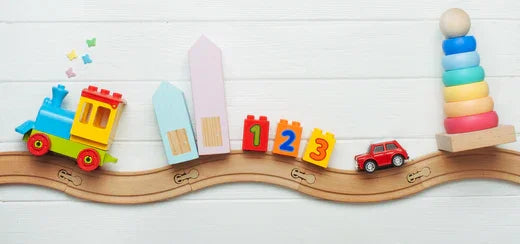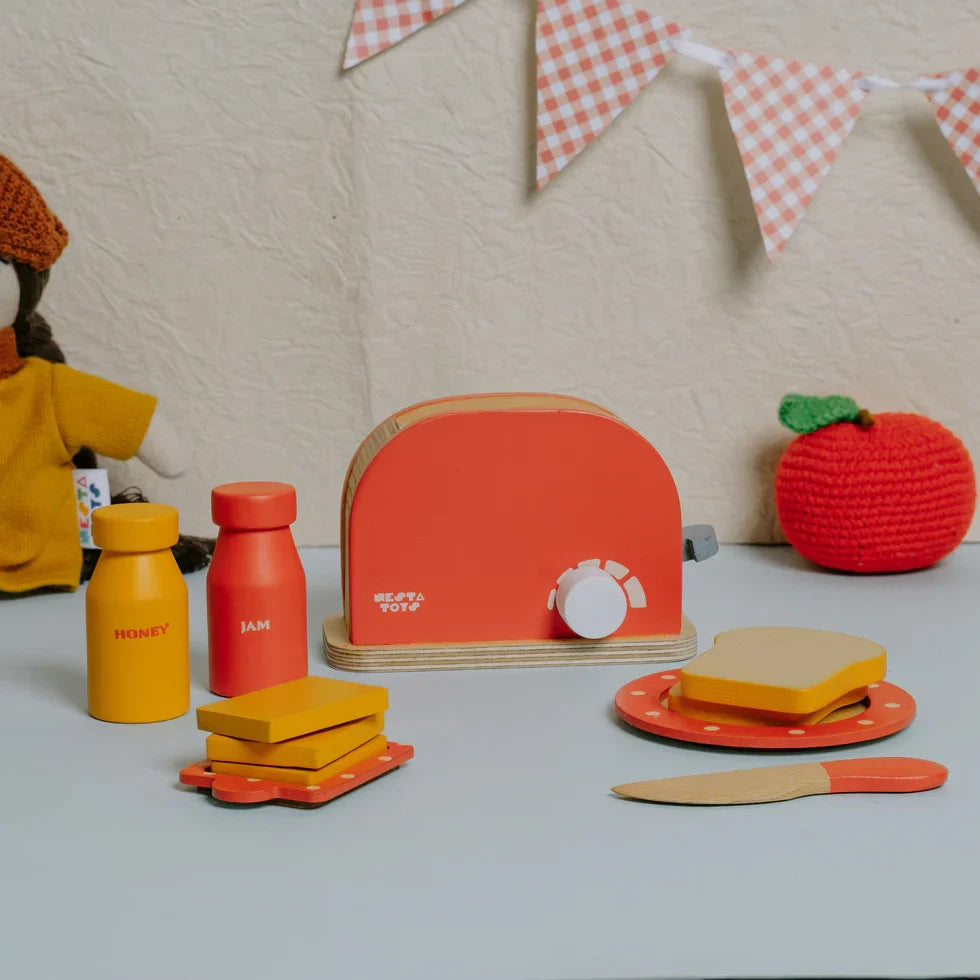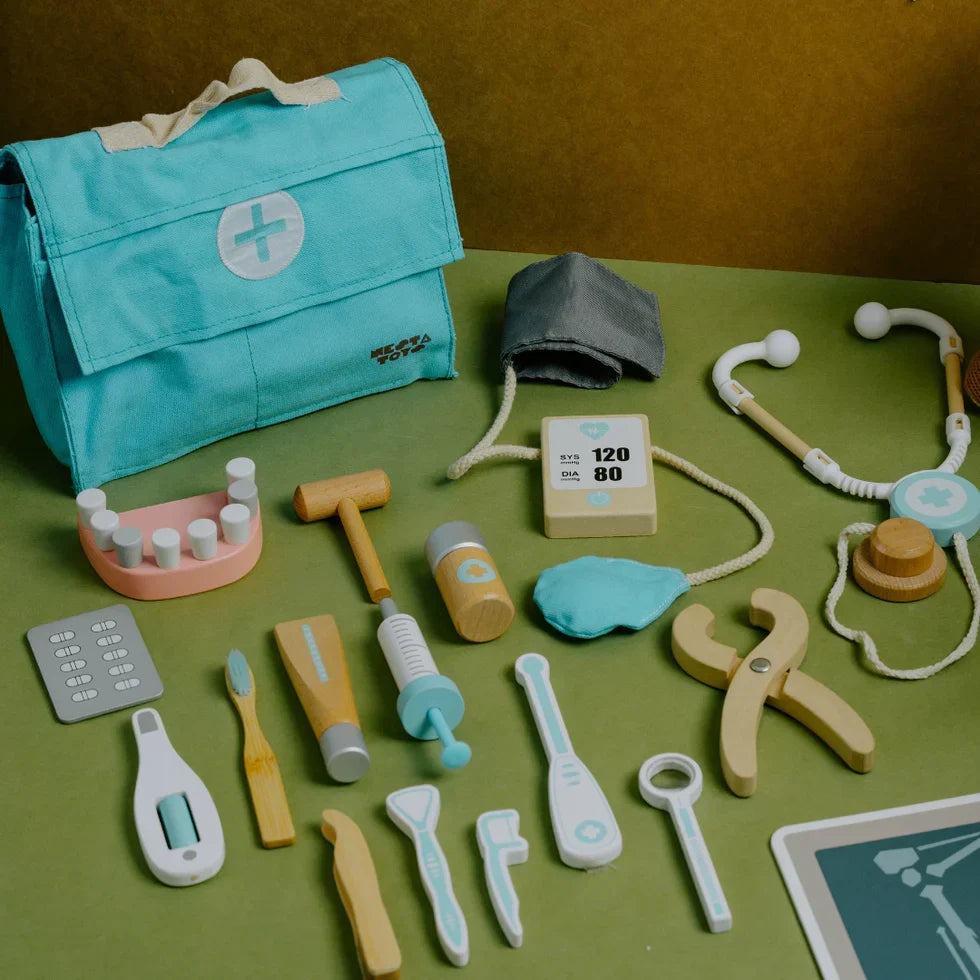Newborn Care
200 Unique Hindu Baby Boy and Girl Names Starting with 'M'
Choosing the perfect name for your child is a thoughtful and significant decision for Hindu families. In astrology, the letter “M” is associated with ambition, leadership, independence, and material success. Children with names beginning with “M” are thought to be determined, resilient, and resourceful, often capable of overcoming obstacles and achieving their ambitions. Names beginning with “M” are linked to Mars (Mangala), symbolizing energy, drive, and passion. Such names are ideal for children who are motivated, confident, and naturally inclined toward leadership roles. Selecting a name with a meaningful origin not only shapes a child’s character but also preserves spiritual and cultural significance. This comprehensive guide features 200 unique Hindu baby names starting with ‘M’—100 for boys and 100 for girls—complete with meanings to help you choose the perfect name for your child. Hindu Baby Boy Names Starting with ‘M’ Maanav – Human; Man Mahesh – Great God; Lord Shiva Manan – Thought; Reflection Mithun – Zodiac sign; Twins Mudit – Joyful; Happy Manik – Gem; Precious stone Madhav – Another name for Lord Krishna Mohit – Enchanted; Infatuated Malhar – A raaga; Name of Lord Shiva Mithil – The kingdom of Mithila Manoj – Born of the mind Mangal – Auspicious; Prosperity Madhur – Sweet; Pleasant Mahavir – Brave; Heroic Manthan – Churning; Thought process Mohan – Attractive; Charming Makarand – Nectar; Honey Maanas – Mind; Intellect Manvith – Intelligent; Thoughtful Medhansh – Wise; Intelligent Maitreya – Friendly; Compassionate Manikandan – A name of Lord Ayyappa Mohanraj – King of attraction Maanik – Precious jewel Mahashaktimaan – All-powerful Mithunesh – Lord of twins Marud – Wind; Air Madhusudan – Slayer of demon Madhu; Lord Krishna Manindra – Lord of the mind Muralidhar – One who carries the flute; Lord Krishna Mahadeva – Great God; Lord Shiva Madhavendra – Lord Krishna Madhavraj – King of sweetness Maheshwar – Lord of the universe Masood – Happy; Fortunate Manvir – Brave; Courageous Midhun – Zodiac sign; Twins Makhan – Butter; Soft Mayank – Moon; Bright Marut – God of wind Mahendra – Great Indra; King of gods Muktanand – Bliss of liberation Manu – The first man; Wise Mandeep – Light of the mind Marwan – A place of happiness Malin – Dark; A type of flower Mansukh – One who brings happiness Mandar – Celestial tree Moti – Pearl; Precious gem Manjit – One who conquers the mind Munish – Lord of saints; Sage Mansoor – Victorious; Blessed Milan – Union; Meeting Mukesh – Lord of the moon Mangalraj – King of auspiciousness Mohitansh – Part of charm Mahavirendra – Great hero Madhwan – Sweet; Pleasant Manasvi – Intelligent; Brilliant Mitraj – Friend of the earth Mahik – Earth; Soil Mayuresh – Lord of peacock; Lord Kartikeya Madhvan – Sweet and virtuous Manohar – Attractive; Charming Mokshith – One who attains liberation Mahid – Powerful; Strong Mithilesh – King of Mithila Mahin – Earth; Great Madhvik – Sweet; Lord Krishna Manvithan – Intelligent; Clever Mahith – Great; Supreme Mayur – Peacock; Graceful Muditansh – Part of happiness Mahyav – Heroic; Brave Manjith – Victorious; Conqueror Mukilan – Cloud; Lord Indra Madhuban – Sweet garden Mahyash – Fame; Glory Manohith – Attractive; Charming Mithilesh – King of Mithila Manvith – Intelligent; Clever Madhukesh – Lord of honey Maanvik – Human; Compassionate Manavendra – Leader of men Mitesh – Friendly; Kind Mahir – Skilled; Expert Madhavansh – Descendant of Krishna Manish – Wise; Intelligent Mitansh – Part of friend; Kindness Mahikesh – Lord of earth Mayuresh – Lord of peacocks Maanit – Honorable; Respected Manvik – Strong; Determined Mahavesh – Powerful; Supreme Mokshit – Liberated; Free Madhuresh – Sweet lord; Charming Manjunath – Lord Shiva Mahendrajit – Victory of great Indra Mitanshu – Part of friend; Affectionate Manveer – Brave; Courageous Hindu Baby Girl Names Starting with ‘M’ Meera – Devotee of Lord Krishna; Ocean Madhavi – Spring flower; Sweet Malini – Adorned with flowers Manisha – Wisdom; Intelligence Meghna – Rain; Cloud Mitali – Friendship; Bond Mandakini – Celestial river; Goddess Ganga Mahika – Dew; Earth Maanvi – Intelligent; Woman Madhurima – Sweetness; Pleasantness Meghal – Cloud; Rain Medha – Wisdom; Knowledge Manjari – Blossom; Flower bud Mahi – Earth; Great Mohini – Enchantress; Goddess Durga Medhanshi – Knowledgeable; Wise Manya – Worthy of honor; Respectful Manvitha – Intelligent; Clever Mishka – Gift of God; Little bear Minal – Precious gem; Beautiful Mili – Loved; Cherished Mahasweta – Pure; White Manjula – Charming; Pleasant Mandira – Goddess Durga; Temple Malar – Flower; Beautiful Mahima – Greatness; Glory Muktika – Freedom; Liberation Meghana – Cloud; Rain Marisha – Skilled; Expert Madhura – Sweet; Pleasant Malavika – Princess; Beautiful Mithila – Kingdom of Mithila Mukta – Pearl; Liberated Maya – Illusion; Goddess Minakshi – Beautiful eyes Madhulika – Honey; Sweet Mohanika – Attractive; Enchanting Maheshwari – Goddess Durga; Shakti Malati – Jasmine flower Mandavi – Princess; Ramayana character Manvi – Human; Woman Mitra – Friend; Sun Madhushree – Sweet; Honey-like Makayla – Who is like God? Mayuri – Peacock; Beautiful Maitri – Friendship; Love Mahiya – Earth; Beautiful Minisha – Goddess; Lovely heart Madhvika – Sweet; Full of sweetness Muni – Sage; Wise Matrika – Mother; Goddess Madhuka – Sweetness; Honey Maanasi – Mind; Intellect Mohita – Delighted; Enchanted Mithya – Illusion; False perception Mohana – Attractive; Charming Madira – Beautiful woman Malathi – Jasmine flower Mahisha – Powerful; Buffalo Madhumati – Sweet; Full of honey Mamata – Motherly love; Affection Maitree – Friendship; Goodwill Menaka – Celestial nymph; Beautiful Maharani – Queen; Royal Malharika – Musical raaga; Melody Madhuli – Sweet; Honey Manohari – Attractive; Charming Maheshni – Great goddess Meenal – Precious gem Mira – Devotee of Lord Krishna; Sea Maitreya – Friendly; Compassionate Malvika – Princess; Graceful Madhura – Sweet; Pleasant Manasi – Intellect; Mind Mahika – Earth; Dew Mohita – Enchanted; Delighted Mitraja – Friend; Companion Mayanka – Moon-like; Bright Mahadevi – Great goddess; Supreme Minali – Precious gem; Beautiful Manjushree – Charming; Graceful Maliniya – Full of flowers Mahirathi – Powerful warrior Manmatha – Cupid; Charming Madhurika – Sweetness; Charm Mithilesha – Queen of Mithila Maanvika – Intelligent; Wise Manorama – Beautiful; Pleasing Madhavini – Sweetness; Lovely Mahashri – Great glory; Respect Mitali – Friendship; Love Mohiniya – Charming; Enchanting Mahakali – Goddess of power Madhulekha – Sweet writing; Poetry Minati – Request; Humble Manasi – Goddess Durga; Mind Malavika – Princess; Graceful Maitreyi – Wise; Friendly Madhubala – Sweet girl; Charming Mohiniya – Enchanting; Attractive This list includes 200 Hindu baby names starting with ‘M’—100 boys and 100 girls—with meaningful origins, spiritual significance, and astrological alignment. Names starting with “M” are perfect for ambitious, strong-willed, and dynamic children, making them ideal choices for 2025. Check out our 0-6 months toy collection for a meaningful gift that’s pure and special for your newborn.
Learn more200 Popular Hindu Baby Names Starting with 'S' for Boys & Girls
This blog features a comprehensive list of 200 Indian baby names beginning with the letter 'S', categorized into boy and girl names. Each name is accompanied by its meaning, offering insights into the cultural significance and essence behind the names. Whether you’re looking for a classic name or something unique, this collection serves as a valuable resource for expecting parents and anyone interested in Indian names.
Learn moreTop 200 Hindu Baby Boy & Girl Names Starting with 'A' and Their Meanings
Explore this list of 200 Indian baby names beginning with "A," designed for both boys and girls. Each name is rich in meaning, offering a blend of traditional significance and modern appeal. Whether you're looking for names that symbolize strength, love, wisdom, or beauty, this collection provides plenty of inspiration to help you select the ideal name for your little one.
Learn moreAre Wooden Toys Better Than Plastic? A Comprehensive Analysis
Wooden toys are increasingly favored over plastic toys for their sustainability, safety, durability, and developmental benefits. Made from renewable materials, wooden toys have a lower environmental impact and are free from harmful chemicals. Their simple designs encourage imaginative play, fostering cognitive and motor skills in children. While plastic toys are often cheaper and more readily available, they come with environmental and health concerns. Overall, wooden toys offer a more eco-friendly, safe, and enriching experience for children, making them a superior choice for parents seeking long-lasting, quality toys.
Learn moreTop 100 Kannada Baby Boy and Baby Girl Names
These names embody the essence of Kannada heritage, offering a blend of tradition, spirituality, and beauty, perfect for your little one's future.
Learn moreTop 50 Punjabi Baby Boy and Baby Girl Names
In Punjabi culture, naming a child is a cherished tradition deeply connected to spirituality, heritage, and family values. Parents often seek names inspired by Sikh Gurus, Hindu deities, or nature, reflecting virtues such as strength, wisdom, and prosperity. Traditionally, the first letter of the name is often decided by the Guru Granth Sahib. Modern Punjabi parents value tradition while also preferring names that are easy to pronounce, unique, and contemporary. Today's parents look for names that honor their heritage while adding a modern touch, ensuring they are meaningful and globally appealing. Here’s a list of popular Punjabi baby names for boys and girls, inspired by Punjabi culture and Sikh traditions, reflecting virtues like bravery, grace, and spirituality. Top 50 Punjabi Baby Boy Names Aman – Peace; Safety Arjun – White, clear; One of the Pandava brothers Bhavik – Devoted; Religious Balraj – King; Mighty Bikram – Brave; Valor Charan – Feet; One who is humble Daljit – Winner of the world Deepak – Light; Lamp Gurpreet – Love of the Guru Harpreet – Love of God Harman – God's gift; A beautiful name Ishaan – Sun; Lord Shiva Jaspreet – One who praises God Jeevan – Life; Soul Kanwar – Prince; Young warrior Karam – Destiny; Action Kirpal – Compassionate; Kind-hearted Labh – Profit; Success Manpreet – One who loves the heart; A name of Lord Krishna Mannat – Vow; A prayer Navdeep – New light; Brightness Nikhil – Complete; Whole Parminder – God; The supreme lord Pritam – Beloved; Lover Ranveer – Heroic warrior; Victor Rajinder – King of kings Ravinder – Sun God Simran – Remembrance; Meditation Sandeep – Light; A bright flame Sohail – A star; Bright Tejinder – Lord of light; Powerful Taran – Savior; Deliverer Uday – To rise; Born to greatness Vaneet – Humble; Polite Vishal – Grand; Magnificent Yash – Fame; Glory Yuvraj – Prince; Heir to the throne Jatin – Lord Shiva Karan – Ear; One of the great heroes of Mahabharata Lalit – Charming; Graceful Manish – God of the mind Puneet – Pure; Clean Rajveer – Brave king Sahil – Guide; Shore Tajinder – Lord of the crown Ravindra – Lord of the Sun Devinder – Lord of gods Gurdeep – Light of the Guru Vivek – Wisdom; Knowledge Raghav – Descendant of Raghu; Lord Rama Top 50 Punjabi Baby Girl Names Amrit – Nectar; Immortal Harpreet – God’s love; One who loves God Jaspreet – One who sings the praises of God Simran – Remembrance; Meditation on God’s name Gurleen – Absorbed in the Guru’s love; One who is close to the Guru Navneet – Fresh; New; Pure Kiran – Ray of light; Sunbeam Manpreet – The one who loves the heart Sukhpreet – One who brings peace and love Rajdeep – Light of the kingdom Amardeep – Eternal light Amandeep – Light of peace Balkar – Strong, brave girl Charanjeet – One who conquers God’s feet Jaswinder – One who has won glory Harleen – One who is absorbed in God’s name Preet – Love; Affection Harminder – Lord’s temple; House of God Simrat – Remembering God Tejinder – Goddess of light; Glory Sandeep – Light; Brightness Nirmal – Pure; Clean; Untainted Kuldeep – Light of the family Rupinder – Goddess Durga; Beautiful Gurpreet – The Guru’s love Manjeet – Victorious mind Nisha – Night; Dream Rajinder – King; Emperor Satinder – The true God Inderpreet – Love of Indra (King of Gods) Sukhdeep – Light of peace Vandana – Worship; Salutation Simranjeet – Victory through remembrance Harmanpreet – One who is always in God’s love Ravinder – Sun God; Light of the Sun Sandeep – Light; Lamp Amritpal – The protector of immortality Tejpreet – One who brings brightness and love Jasveer – One who is victorious in glory Harjinder – Lord of the universe Navjot – New light; New beginning Mandeep – Light of the mind Gurvinder – The guru’s light; Guru’s blessing Dilpreet – One who brings happiness to the heart Kirandeep – Light of the sun Satpreet – One who loves truth Amandeep – Light of peace Harbans – Blessing of God Sarabjit – Victorious; Winner of everything Harvinder – God’s light; The light of God’s name These names embody the strength, spirituality, and beauty of Punjabi culture and faith, making them a meaningful choice for your little one.
Learn more100+ Unique Tamil Baby Boy and Baby Girl Names
Tamil baby names carry profound meanings, often reflecting tradition, ancestral heritage, and spiritual beliefs. These names are traditionally chosen based on astrology, sacred texts, and family customs. They often honor elders or deities and carry blessings and significance that parents hope will guide their children throughout life. Modern Tamil parents value tradition while preferring names that are easy to pronounce and globally adaptable. With increasing global exposure, parents now seek names that balance heritage with modern appeal, ensuring they remain unique yet deeply rooted in Tamil culture. Top 100 Tamil Baby Boy Names Traditional Tamil Names Aadhavan – Sun Aarav – Peaceful Adhithan – Leader, King Anirudh – Boundless Arjunan – Bright, Shining Bharathan – Cherished, Protector Chandran – Moon Dharshan – Vision, Blessed Elankathir – Young Sunray Ezhilarasan – Handsome King Modern Tamil Names Harish – Lord Shiva Ilango – Prince Jayakanth – Glorious Victory Kaushik – Sage Vishwamitra Kavin – Beautiful, Poetic Lingan – Symbol of Lord Shiva Madhan – Sweet, Honey-like Naveen – New, Innovative Oviyaan – Artist, Creator Pranesh – Lord of Life Names Inspired by Nature Thendral – Cool Breeze Vasanth – Spring Season Malarvendan – King of Flowers Maruthan – God of Wind Poovizhi – Gentle Eyes like a Flower Vanam – Forest Kaatru – Wind Ayan – Natural Flow Theeyan – Radiant, Fire-like Nilavan – Moon-like Names with Divine Significance Ganeshan – Lord Ganesha Karthikeyan – Lord Murugan Murugan – Tamil God of War Sivananthan – Lord Shiva’s Son Shanmugan – Six-Faced Lord Periyan – Grand, Magnificent Venkatesh – Lord Vishnu Raghunathan – Lord Rama Yugan – Era of Lord Krishna Ulaganathan – Lord of the World Virtue-Based Names Arivu – Wisdom Gnana – Knowledge Suthan – Pure, Intelligent Dhevan – Divine Thiru – Sacred, Holy Vairavan – Courageous Santhosh – Happiness Mathi – Intelligent, Moon Sakthivel – Powerful Spear (Lord Murugan) Thayanidhi – Treasure of Kindness Short & Unique Names Abi – Graceful Ani – Infinite Eka – Unique Ilan – Youthful Ovi – Artist Renu – Atom, Particle Siru – Small, Precious Tiru – Sacred Vayu – Air, Wind Yazh – Musical Instrument Names Inspired by Historical Tamil Kings & Warriors Karikalan – Famous Chola King Rajendra – King of Kings Vikrama – Brave Warrior Sundarapandian – Pandya King Pazhani – Famous Temple of Murugan Veeran – Brave Udhayan – Rising Sun Arasan – King Sendhil – Lord Murugan Velavan – Murugan with a Spear Top 100 Tamil Baby Girl Names Traditional Tamil Baby Girl Names Aadhira – Moon Aaradhana – Worship, Devotion Abinaya – Expressive, Dance Anbu – Love, Kindness Arasi – Queen Bhuvana – Earth, World Chandini – Moonlight Dharani – Earth Ezhil – Beauty Ilaveni – Spring Season Modern Tamil Baby Girl Names Harini – Goddess Lakshmi, Deer Ishwarya – Prosperity, Goddess Durga Jayani – Victory Kaaviya – Poem, Epic Keerthana – Divine Song Lekha – Writing, Document Malar – Flower Nithila – Radiant, Bright Oviya – Artist, Beautiful Drawing Pranaya – Affection, Love Names Inspired by Nature Thendral – Cool Breeze Vaanathi – Celestial Beauty Mullai – Jasmine Mugil – Cloud Pavizham – Coral Vennila – Bright Moon Ponmalar – Golden Flower Agalya – Beauty of the Earth Nilaveni – Blue Sky Thenmozhi – Honeyed Words Names with Divine Significance Abirami – Goddess Lakshmi Bhavani – Goddess Durga Chandrika – Moonlight Devika – Little Goddess Eshwari – Goddess Parvati Gajalakshmi – Goddess of Prosperity Karthika – Goddess Durga, Name of a Star Meenakshi – Goddess Parvati, Beautiful Eyes Ragavi – Goddess Saraswati Shanvika – Goddess Lakshmi Virtue-Based Names Akalya – Intelligence Gnanika – Knowledgeable Tharini – Earth, Supporter Dheeksha – Dedication, Commitment Vairani – Brave, Bold Santhiya – Peaceful Mathini – Wise Thilagavathi – Best among women Suvetha – Gentle, Noble Thayanidhi – Treasure of Kindness Short & Unique Tamil Baby Girl Names Abi – Graceful Ani – Infinite Eka – Unique Ila – Earth, Daughter of Manu Ovi – Artist Renu – Atom, Particle Siru – Small, Precious Tiru – Sacred Vaya – Strength Yazh – Tamil Musical Instrument Names Inspired by Tamil Culture & Heritage Tamilchelvi – Tamil Princess Ilamathy – Young Moon Vembuli – Brave & Smart Sundari – Beautiful Punniya – Holy, Virtuous Kuyili – Sweet-voiced Ulagamathi – Brightest in the world Vanmathi – Intelligent like the Sky Senthamizh – Classical Tamil Suganthi – Fragrant Rare & Powerful Names Aabha – Glow, Shine Bhavithra – Pure Charulatha – Beautiful Creeper Dharshani – Blessed Eshitha – Goddess Lakshmi Fanishka – Goddess Durga Gayathri – Sacred Vedic Chant Harinya – Goddess Lakshmi Idhaya – Heart, Kindness Jeyashree – Goddess of Victory These 100+ Tamil baby boy and girl names reflect tradition, spirituality, and elegance, with many inspired by mythology, nature, and historical Tamil heritage, making them timeless and meaningful choices for your little one.
Learn moreEssential Hospital Bag Checklist for Mom and Baby: Everything You Need for Labor and Delivery
Packing your hospital bag is an important step in preparing for labor and delivery. This guide provides a complete checklist for both mom and baby, covering essential items like documents, comfort aids, post-delivery care products, and baby essentials. Whether it’s your first time or you're experienced, having the right items can help make your hospital stay more comfortable and stress-free. From clothing to toiletries and baby gear, this exhaustive list ensures nothing is forgotten!
Learn moreHow to Wean Your Baby Off Breastfeeding and Bottle-Feeding Completely
Weaning from breastfeeding and bottle-feeding means slowly helping your baby get used to other foods and drinks. Begin by offering solid foods and a cup for drinking. Slowly cut back on breastfeeding or bottle-feeding over a few weeks, swapping them with meals, snacks, or formula as needed. Watch your baby’s cues and make sure they’re comfortable during the transition. Talk to a pediatrician for personalized advice to support your child’s nutrition and well-being. Patience and consistency are key to successful weaning. How do I eliminate excessive breast or bottle feedings? To decrease breast or bottle feedings to a level that won't cause any of the problems take the following steps: Reduce the number of milk feedings your child receives to 3 or 4 a day. When your child comes to you for additional feedings, give him extra holding and attention instead. Get your child on a schedule of three main meals a day plus two nutritious snacks. Introduce feeding from a cup if this was not done . Cup feedings are needed as substitutes for breast or bottle feedings regardless of the age at which weaning occurs. The longer the infant goes without using a cup, the less willing he will be to try it. Starting daily cup feedings by is a natural way to keep breast or bottle feedings from becoming overly important. Immediately stop letting your child carry a bottle around during the day. The companion bottle can interfere with normal development that requires speech or two-handed play. It can also contribute to problems with tooth decay. Immediately stop letting your child take a bottle to bed. In addition to causing sleep problems, taking a bottle of formula or milk to bed may cause severe tooth decay. Weaning from the breast or bottle to the cup should always be done gradually and with love. The "cold turkey" or abrupt withdrawal approach will only make your child angry, clingy, and miserable. While there is no consensus about the best time to wean, there is agreement about the appropriate technique. How do I eliminate breast-feeding completely? Weaning your baby off breastfeeding is a big step for both of you. It's a gradual process that requires patience, understanding, and a gentle approach. With the right approach and support, you can gently wean your baby without stress. Gradually eliminate breast feedings. First, eliminate the feeding that is least important to your child (usually the midday one). Replace it with a cup feeding. About once a week drop out one more breast feeding. The bedtime nursing is usually the last to be given up. There's no reason why you can't continue bedtime nursing for months if that's what you and your child want. Some mothers prefer to wean by decreasing the length of feedings. Shorten all feedings by 2 minutes each week until they are 5 minutes long. Then eliminate them one at a time. Relieve breast engorgement. Because the breast operates on the principle of supply and demand, the reduced amount of sucking time eventually reduces the amount of milk your breasts produce. In the meantime, express just enough milk to relieve breast pain resulting from engorgement. (This is better than putting your baby to the breast for a minute, because she probably won't want to stop nursing.) Remember that complete emptying of the breast increases milk production. If your child asks to nurse after you have finished weaning, respond by holding. How do I eliminate bottle-feeding completely? Weaning your baby from the bottle can be a significant milestone in your parenting journey. It's a step towards independence and marks a new phase of growth and development. However, the transition can sometimes be challenging, especially for parents who have relied heavily on bottle feeding. This guide will provide you with practical tips and strategies to help you successfully eliminate bottle feeding and transition your baby to cup feeding. Offer formula in a cup before each bottle feeding. Use whole milk if your child is 1 year of age or older. Make the weaning process gradual. Eliminate one bottle feeding every 3 to 4 days, depending on your child's reaction. Replace each bottle feeding with a cup feeding and extra holding. Eliminate bottle feedings in the following order: midday, late afternoon, morning, and finally bedtime. The bedtime feeding is often the hardest to give up. Gradually reduce the milk amount in the bottle each night over a week to make the transition smoother. Once weaning is complete, respond to bottle requests by holding your child for comfort. If they still need to suck, offer a pacifier instead. Disclaimer: This article is for general information and educational purposes only and is not a substitute for professional medical advice, diagnosis, or treatment. Every baby is unique, and what works for one may not be suitable for another. Parents should always consult their pediatrician or a qualified healthcare professional before making decisions about their baby's feeding or introducing new foods.
Learn more












